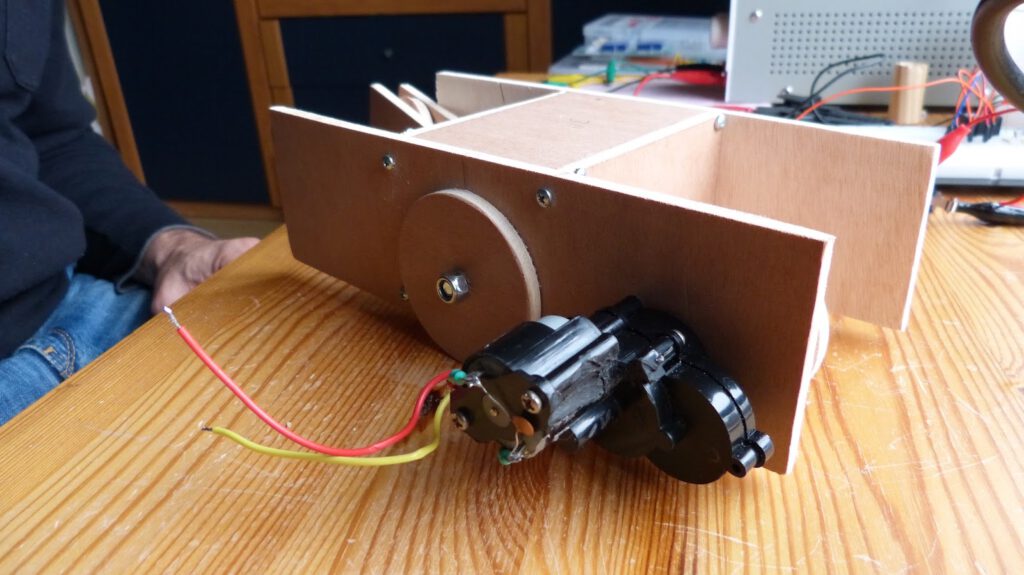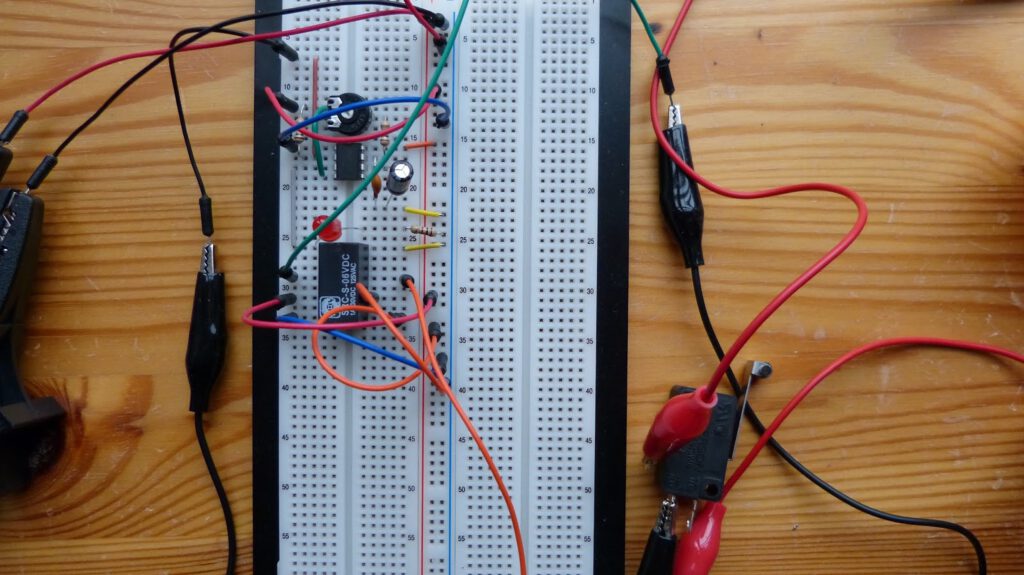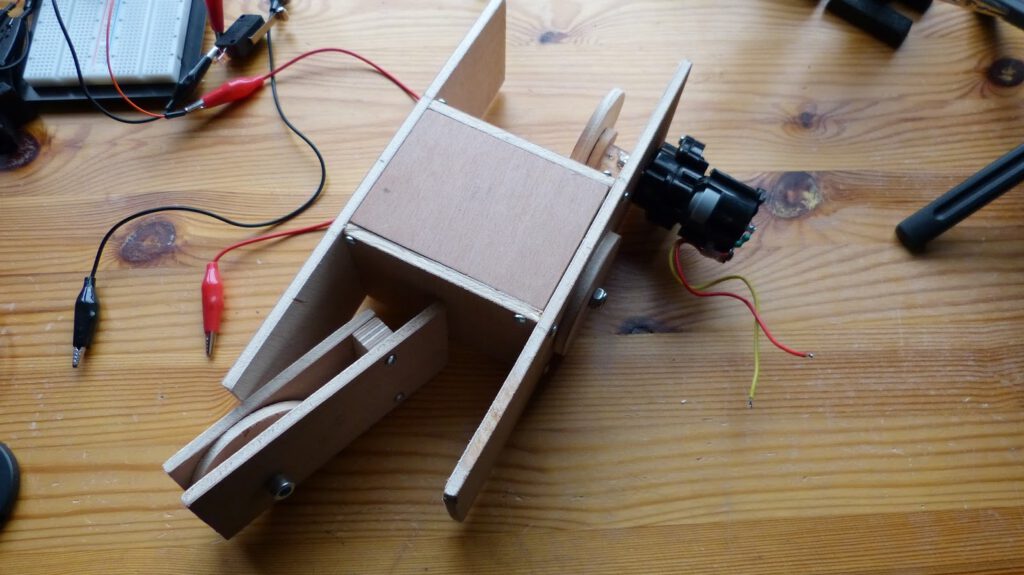This experiment is about building a little robot cart. Make:Electronics describes all the steps that needs to be taken in great detail beginning with the cart and then the circuit. This experiment is a lot of work but I think it is worth it because you make a complete robot from the bottom up. The cart is much smaller than I initially thought and making small things brings their own set of problems in terms of precision and tools needed.
The cart needs a motor and I salvaged one from an old RC car that was lying around in the house. For this project I use a 6V DPDT relay. I decided to make the circuit first. I had some problems with the relay because the switch is connected differently than the one used in the book. Luckily this was easily solved by looking at the datasheet of the relay. I tested the motor on the circuit and it worked well.

Next I created the cart. I made the cart of 1/4″ thick plywood and not the ABS material that is suggested in Make:Electronics since I have no experience with ABS. I cut the plywood and connected the pieces with screws and bolts and nuts for the wheels. The cart looks pretty good (I think) and maybe a good platform for further experiments. There are two potential problems with the cart. First the wooden wheels lack grip. Maybe I’ll cover the surface of the wheel with rubber tape to overcome this. Second the motor is spinning fast maybe too fast for the cart. The cart might crash because of this. This could be solved by adding some gears to the motor but that would complicate things. For now I will just wait and see what happens once the cart is finished.
Next I will solder the circuit on a piece of perfboard and fit it on the cart. The book describes the principle of limit switches to create a better steering mechanism (p278). The author doesn’t describe in detail how to add this to the robot cart but I might be a nice addition to this experiment.

